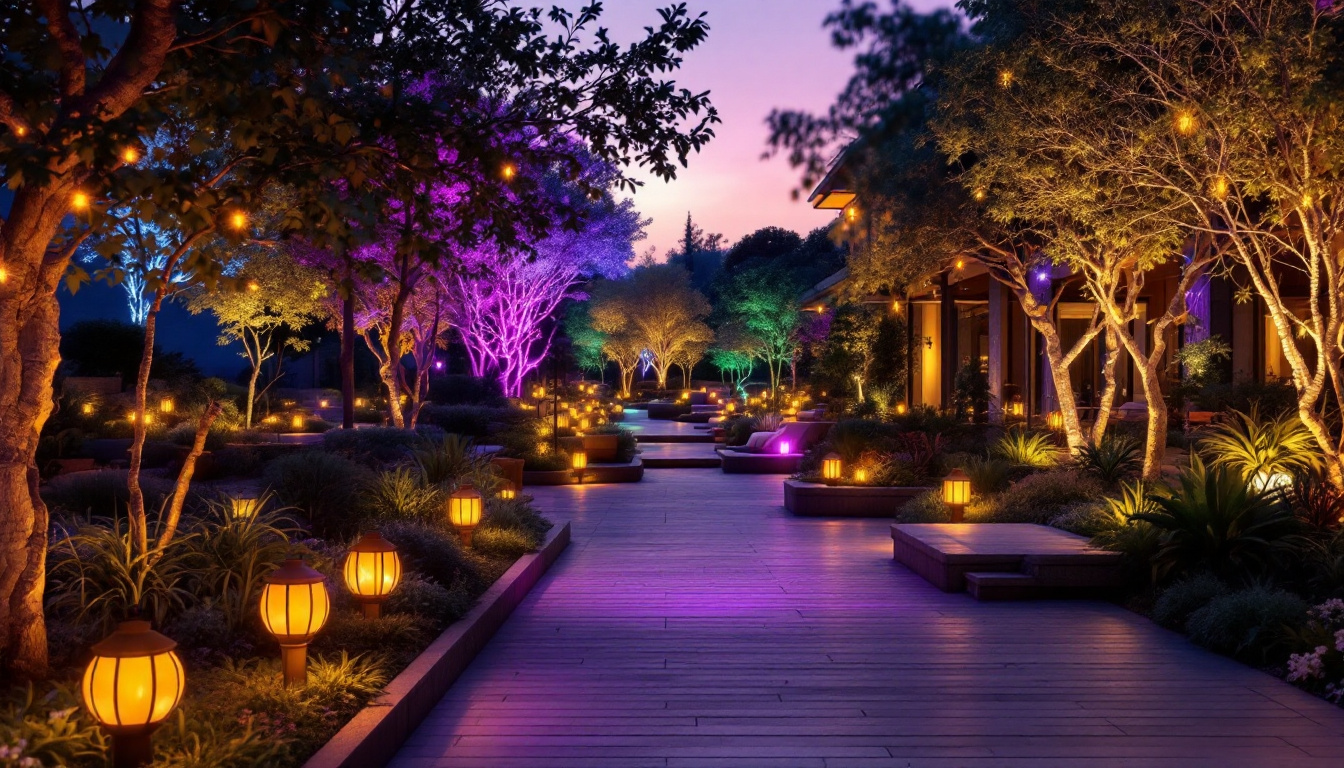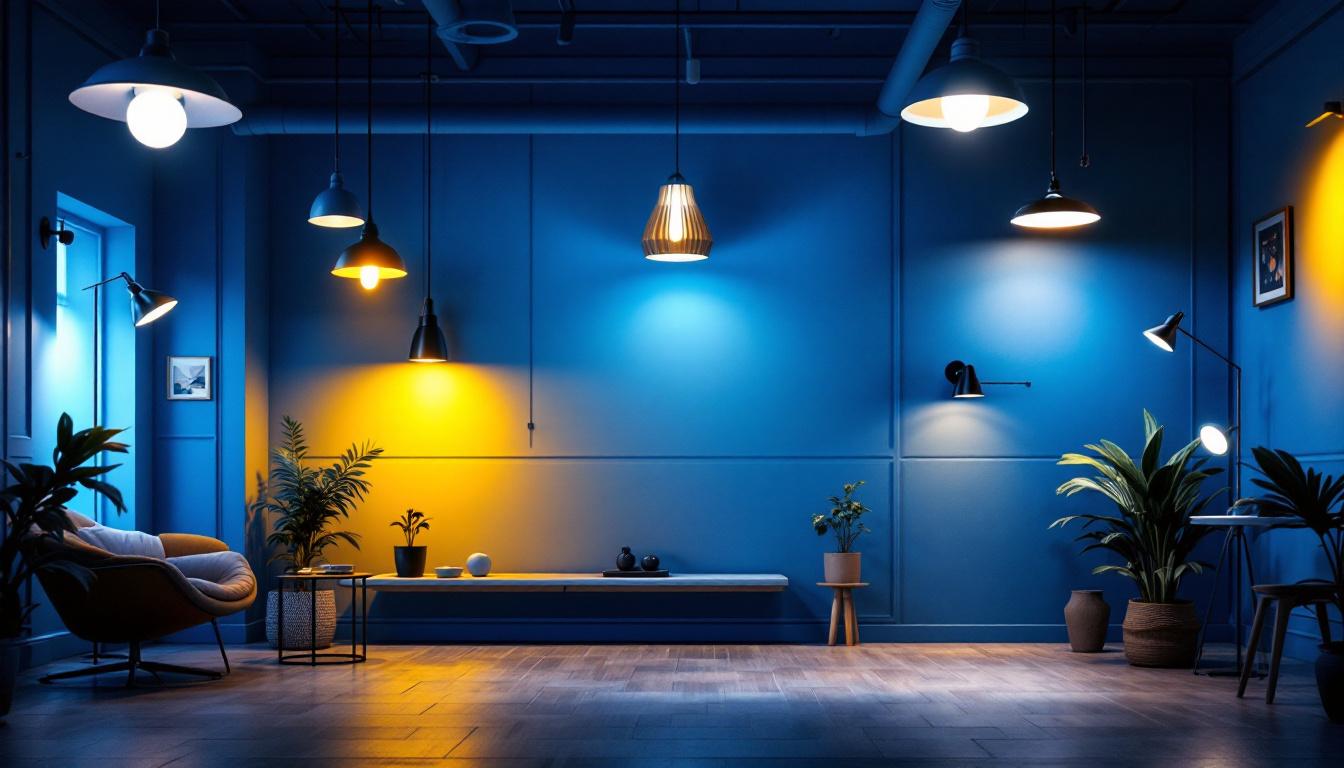
Lighting plays a pivotal role in enhancing outdoor spaces, creating ambiance, and ensuring safety. However, when it comes to selecting outdoor lighting, many lighting contractors often overlook the significance of color. This article delves into the various aspects of color outdoor lights that can elevate a project and meet client expectations.
Color is not merely an aesthetic choice; it profoundly influences the atmosphere of outdoor spaces. Different colors evoke various emotions and reactions, making it essential for lighting contractors to understand the psychological impact of color in outdoor lighting.
For instance, warm colors like yellows and oranges can create a welcoming and cozy environment, ideal for residential patios or gardens. In contrast, cooler colors such as blues and greens can evoke tranquility, making them suitable for pool areas or relaxation spaces. Understanding these nuances allows contractors to tailor their lighting designs to the specific needs and desires of their clients.
Colors can significantly affect mood and behavior. For example, studies have shown that warm colors can stimulate social interactions, while cooler tones promote calmness and relaxation. By leveraging this knowledge, lighting contractors can create outdoor spaces that not only look beautiful but also enhance the overall experience for users.
Additionally, color can impact visibility and safety. Bright, vibrant colors can help illuminate pathways and highlight potential hazards, ensuring that outdoor spaces are not only aesthetically pleasing but also functional and safe. This is particularly important in areas where children or pets may be present, as well as in settings that host evening events or gatherings. By strategically using color to enhance visibility, contractors can contribute to a safer and more enjoyable outdoor experience for all.
Color temperature is another critical factor that contractors should consider. Measured in Kelvins (K), color temperature describes the appearance of light emitted by a source. For outdoor lighting, a range of 2700K to 3000K is typically considered warm, while 4000K and above is classified as cool.
Choosing the right color temperature can greatly influence the overall feel of an outdoor area. Warm white lights are often preferred for residential settings, while cooler temperatures may be more appropriate for commercial spaces or modern architectural designs. Understanding the nuances of color temperature can help contractors make informed decisions that align with their clients’ visions. Furthermore, the interplay of color temperature with surrounding elements—such as foliage, water features, and architectural materials—can create dynamic visual effects that enhance the beauty of outdoor spaces. For instance, the way a warm light reflects off a stone pathway can create an inviting ambiance, while cooler lights can emphasize the sleek lines of contemporary design, showcasing the structure’s elegance. This interplay not only adds depth to the design but also helps in creating a cohesive look that resonates with the intended atmosphere of the space.
Each outdoor space has its unique characteristics and intended use, which should guide the color selection process. Lighting contractors must consider the purpose of the area, the architectural style, and the surrounding environment when choosing colors for outdoor lights.
In residential settings, homeowners often seek to create a warm and inviting atmosphere. Soft, warm colors are typically preferred for patios, gardens, and walkways. These colors not only enhance the beauty of the landscape but also create a sense of comfort.
Moreover, accent lighting can be used to highlight specific features such as trees, sculptures, or architectural elements. Using colored lights strategically can draw attention to these focal points, adding depth and dimension to the overall design. For instance, a soft amber hue can create a cozy ambiance around a fire pit, while cooler tones like blue can evoke a serene atmosphere near a water feature. Homeowners can also experiment with color temperature to achieve different moods throughout the evening, transitioning from warm tones for gatherings to cooler shades for quiet nights.
For commercial properties, the color of outdoor lighting can significantly impact branding and customer experience. Businesses may choose colors that align with their brand identity, using lighting to create a cohesive look that attracts customers.
In public spaces, such as parks or plazas, color can be used to enhance safety and visibility. Bright, vibrant colors can illuminate pathways, making them more inviting and secure for visitors during nighttime hours. Additionally, using colored lights to create seasonal displays can attract more visitors and enhance community engagement. For example, during the holiday season, warm white lights can create a festive atmosphere, while colorful LED displays can be used for events like festivals or parades, encouraging community participation and creating memorable experiences. Furthermore, the integration of smart lighting technology allows for dynamic color changes that can respond to events or time of day, further enriching the public experience and fostering a sense of place in urban environments.
The evolution of lighting technology has opened up new possibilities for color outdoor lights. LED technology, in particular, has revolutionized the way contractors approach outdoor lighting design.
LED lights are not only energy-efficient but also offer a wide range of color options and flexibility. With the advent of smart lighting systems, contractors can now provide clients with customizable solutions that allow for dynamic color changes based on time of day, events, or personal preferences.
Smart lighting systems enable contractors to create interactive and engaging outdoor environments. Clients can control the color and intensity of their outdoor lights through mobile apps or voice commands, allowing for a personalized experience.
These systems can also be programmed to change colors for special occasions, holidays, or events, adding an extra layer of excitement and engagement. By incorporating smart technology into their designs, lighting contractors can differentiate themselves in a competitive market. Furthermore, many smart lighting solutions are compatible with other home automation systems, allowing for seamless integration into a homeowner’s existing smart ecosystem. This interconnectedness not only enhances convenience but also provides opportunities for energy savings, as homeowners can schedule their lighting to align with their daily routines.
As sustainability becomes increasingly important, lighting contractors must consider the environmental impact of their choices. LED lights are not only energy-efficient but also have a longer lifespan compared to traditional lighting options. This longevity reduces waste and the need for frequent replacements.
Moreover, many LED lights are now available in a variety of colors, allowing contractors to meet aesthetic demands without compromising on energy efficiency. By prioritizing sustainable practices, contractors can appeal to eco-conscious clients and contribute to a greener future. In addition to using LED technology, many contractors are exploring solar-powered lighting options, which harness renewable energy to power outdoor spaces. This not only further reduces energy consumption but also eliminates the need for extensive wiring, making installation simpler and more cost-effective. As the demand for environmentally friendly solutions grows, contractors who embrace these innovations will find themselves at the forefront of the industry, catering to a clientele that values both style and sustainability.
Despite the advantages of color outdoor lighting, many contractors still make common mistakes that can detract from the overall design. Recognizing these pitfalls can help ensure a successful lighting project.
One of the most significant mistakes is failing to consider color harmony. When selecting outdoor lights, it is essential to ensure that the chosen colors complement the existing landscape and architecture. A mismatched color scheme can create a jarring effect, detracting from the overall aesthetic.
Contractors should take the time to assess the colors present in the outdoor space, including the materials used in the architecture, landscaping, and hardscaping. By creating a cohesive color palette, contractors can enhance the visual appeal of the space and create a more harmonious environment.
Another common oversight is neglecting the impact of surrounding light sources. Natural light, streetlights, and other artificial lights can influence how outdoor colors appear at night. Contractors must consider these factors when designing lighting solutions to ensure that the colors remain vibrant and true to their intended appearance.
Conducting a thorough site analysis during the planning phase can help identify potential challenges and inform the design process. By understanding how different light sources interact, contractors can make adjustments to their designs to achieve the desired effect.
In conclusion, color outdoor lights offer lighting contractors an opportunity to elevate their designs and create captivating outdoor spaces. By understanding the psychological effects of color, selecting appropriate hues for different environments, and leveraging technological advancements, contractors can enhance their projects and meet client expectations.
Moreover, avoiding common mistakes such as overlooking color harmony and neglecting the impact of surrounding light can lead to more successful outcomes. As the demand for innovative and aesthetically pleasing outdoor lighting continues to grow, contractors who prioritize color will set themselves apart in a competitive market.
Ultimately, the integration of color in outdoor lighting design is not just about illumination; it is about creating experiences that resonate with users and enhance the beauty of the environment. By embracing the power of color, lighting contractors can transform outdoor spaces into vibrant, inviting areas that leave a lasting impression.
Ready to bring the power of color into your outdoor lighting designs? At LumenWholesale, we provide lighting contractors with an exceptional range of high-quality, specification-grade lighting products at the most competitive wholesale prices. Say goodbye to local distributor markups and hello to a vast selection of reliable, high-performance lighting that meets the highest industry standards. With the convenience of free shipping on bulk orders, you can ensure your projects shine brightly without any hidden fees. Elevate your outdoor lighting projects and create unforgettable experiences with the value and quality that only LumenWholesale can offer. Wholesale Lighting at the Best Value.

Discover the essentials of supply lighting with our comprehensive guide.

Discover the essential checklist for lighting contractors when choosing portable flood lights.

Discover how LED strip tape can revolutionize the workflow of lighting contractors by saving time and reducing costs.

Discover how motion-detected lights can revolutionize your business as a lighting contractor.